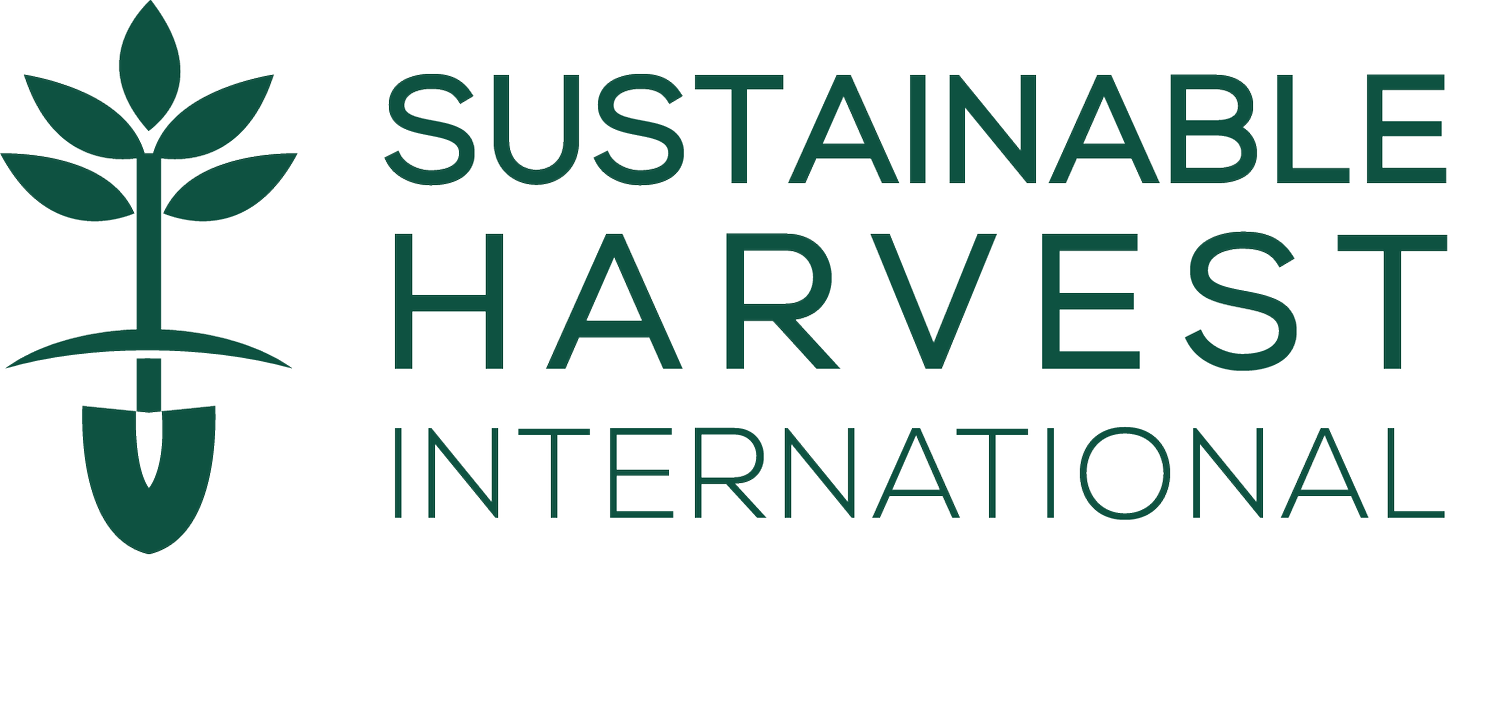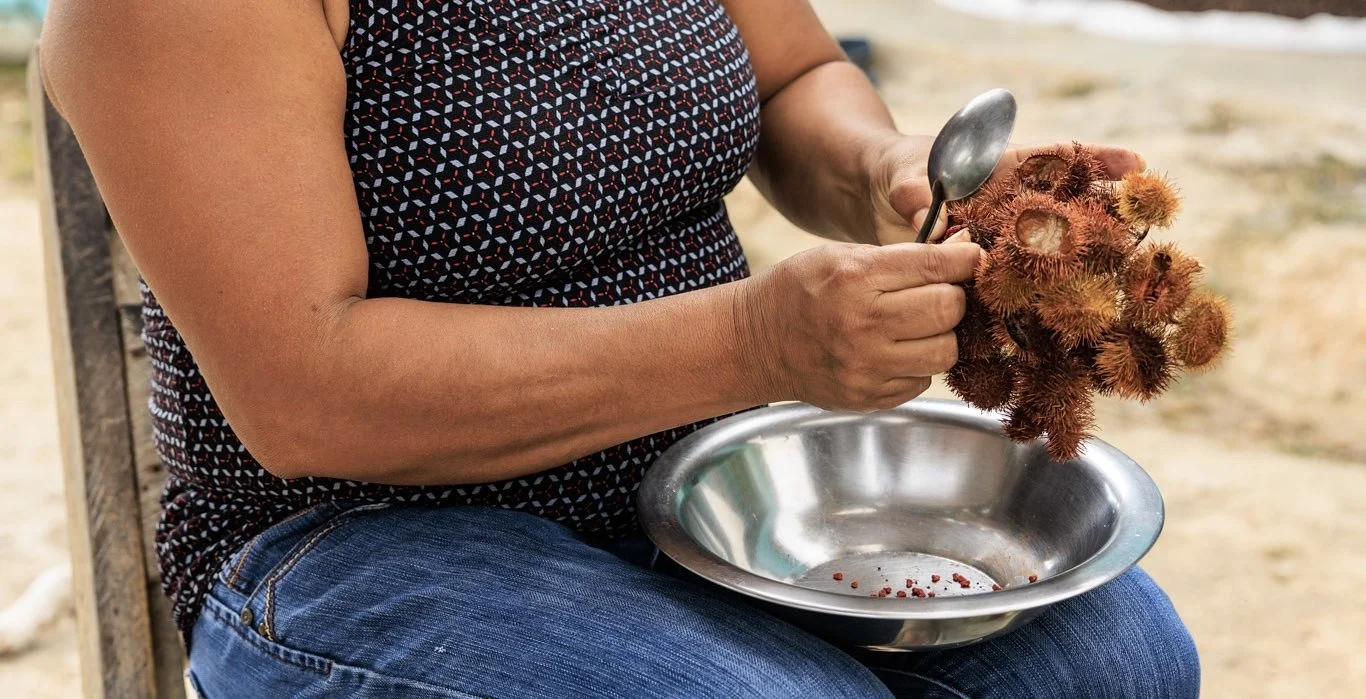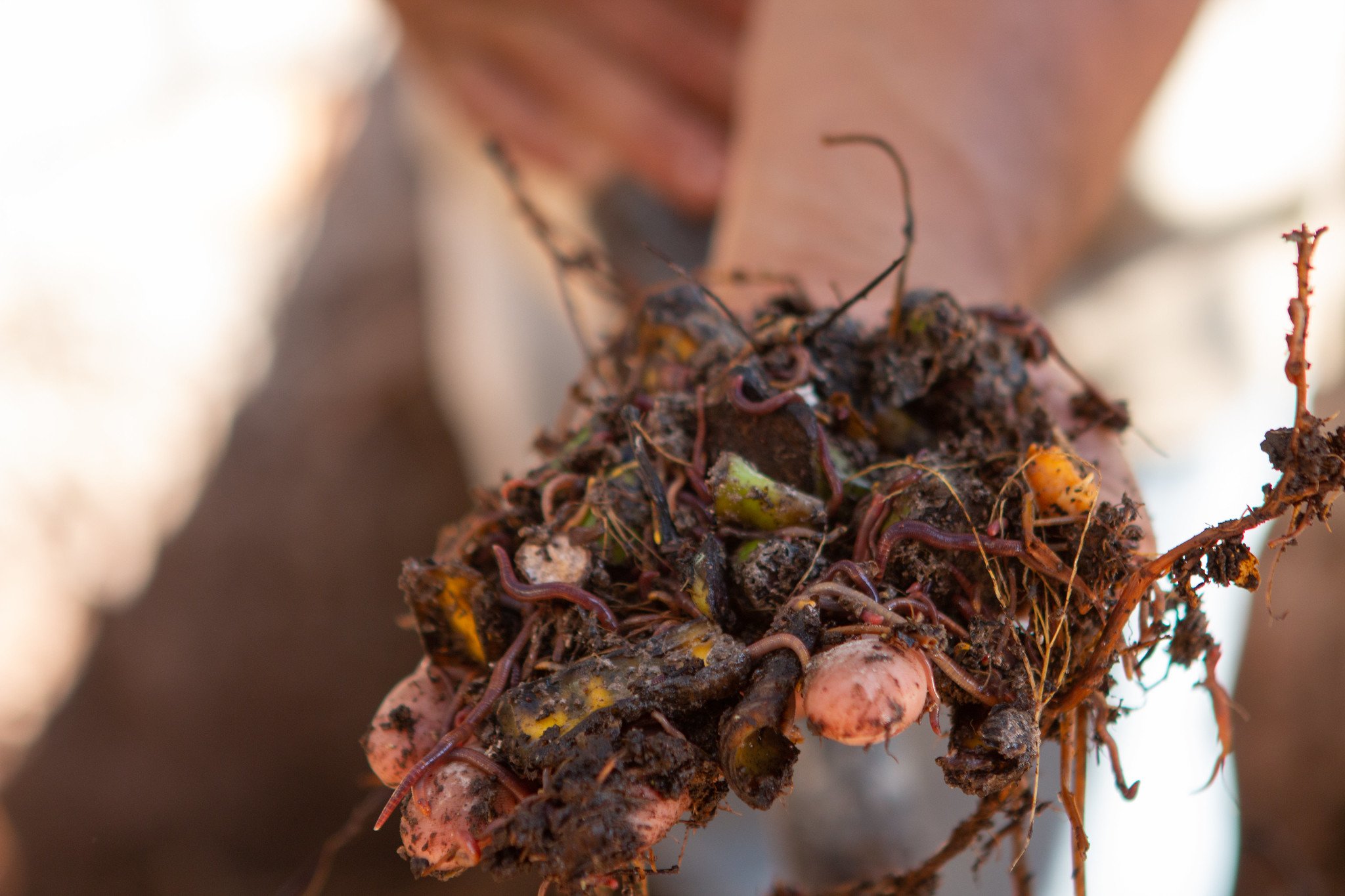““My philosophy has always been that the health of soil, plants, animals, people, and the environment is one.””
Conventional, or industrial, agriculture uses chemicals to defend crops from weeds, certain insect species, and diseases. However, these chemicals harm the very thing the crops rely on: soil. Harsh chemical fertilizers disrupt natural soil networks made up of plants and fungi. The commonly used salt-based formulas reduce essential soil minerals and nutrients, increasing acid levels and decreasing plant growth. Without nutrient-rich soil, we can't have the fruits, vegetables, trees, and animals we rely on for nutrition and healthy ecosystems.
Due to the prevalence of conventional agriculture, a significant amount of vital topsoil has vanished. In the past 150 years, half of the world’s fertile soil has disappeared. The remaining half is projected to last only 60 years, meaning many people alive today will likely face challenges with securing enough food in the future. To ensure we can feed ourselves, our families, and our communities, we must urgently overhaul our food systems.
The Soil-ution
Sustainable Harvest International's proven model demonstrates the profound benefit of family farmers working in harmony with nature. Our approach empowers farmers to be catalysts for necessary change. Our thousands of partner farmers are among many worldwide who are making the transition to regenerative farming techniques.
While conventional agriculture depletes soil, regenerative agriculture replenishes it. Instead of synthetic fertilizers, regenerative agriculture works with nature to maintain healthy soil ecosystems. Farmers enhance soil biodiversity by building up soil organic matter, maintaining perennial crops rooted in the soil, keeping the soil covered with mulch and disturbing the soil as little as possible through low or no till practices. These key ingredients lead to healthier, more productive land. The lack of synthetic fertilizers has many benefits, including healthier food, nutrient-rich soil that allows for better root growth, and uncontaminated water supplies.
In nature, everything leans towards balance. With regenerative farming, nature’s balance gets reintroduced into the ecosystem, allowing the farmer to grow nutritious and sustainably produced food.
Tree planting and wildlife conservation are other aspects of regenerative farming. Planting trees helps prevent soil erosion (the gradual loss of soil and land). Trees hold the soil in place, together with soil organic matter, strengthening the soil structure needed to absorb rainfall. Wildlife both above and below ground is also an essential part of keeping the local ecosystem in balance. Regenerative farmers work with the surrounding forest and, in turn, farm in a way that benefits their land and the environment.
How do family farmers restore soil health?
Composting
Organic materials including agricultural residue such as corn stalks and rice hulls, weeds, manure, ash from cookstoves and kitchen waste, such as peels and eggshells, join to create rich, life-giving compost. The composting process creates an environment for decomposition. As the materials mix together, they break down into a substance like topsoil that makes nutrients available to growing plants. This is when the compost goes back into the soil to support another season of growing crops.
A handful of compost with earthworms and food scraps from SHI-Honduras partner farmer, Rogelio Mazariegos’, (right) compost pit.
SHI partner farmers use ingredients they have right on their farm. This allows them to save money, since they no longer need to buy as many materials, and they minimize waste by reusing every food scrap. Some of our partner farmers take it a step further. Señor Rogelio, SHI-Honduras participant, sells his Bokashi compost at local fairs and markets. The compost has restored his farm, and now it’s allowing him to be a small business owner.
2. Organic fertilizers
While synthetic fertilizers can kill soil ecosystems, organic fertilizers can support soil health. The healthier soil is, the more resilient it is in the face of heavy storms, drought, and other environmental conditions. In addition to several kinds of compost, SHI farmers make efficient microorganisms, a liquid substance that mixes with compost to restore soil structure. The liquid contains microbes, bacteria, and yeast which encourage photosynthesis. These naturally occurring microorganisms work together to maintain and even improve crop health,
SHI-Belize partner farmer Rodrigo Escobar applies efficient microorganisms to his composting pit.
3. Mulch
Healthy soil requires constant moisture. When soil isn’t covered, it’s less able to hold the moisture from rainfall, signifying less water for the crops. Mulch is anything placed on the ground to prevent weed growth and maintain soil moisture. SHI farmers use organic materials, such as agricultural residue and leaves. Eventually, the organic mulch decomposes and improves soil fertility.
SHI-Belize participant Romula Cantun adds mulch to her family garden.
4. Cover cropping
Covering the soil with plants protects the soil from weather extremes and encourages the exchange of nutrients above and below ground. The crops act as living mulches, maintaining soil structure, suppressing weeds, and improving water retention. Keeping soil covered ensures essential minerals stay underground, such as nitrogen, therefore reducing the need for fertilizers. Instead of leaving fields bare after harvest, SHI partner farmers plant cover crops to promote ecological balance all year long.
SHI-Panama partner farmer Ángel Vivas’ agroforestry parcel.
In Panama alone, 2.1 million hectares (5.1 million acres) are subject to drought and soil degradation. A large percentage of the 516,000 people living in this area rely on that degraded land for survival. SHI farmers restore soil health to give these nearly half a million people a chance to sustain themselves and support their families. Without soil, we lose our life source. With it, we can do anything.
Author: Tania Roa, SHI’s Communications + Outreach Coordinator












